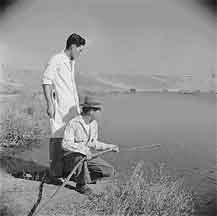1901 Mosquitos Cause Yellow Fever

On October 27, 1904, New York City opened its first subway line, spanning 9.1 miles from City Hall to 145th Street. Operated by the IRT, it transformed urban transportation, providing faster travel across the city. The ornate City Hall station symbolized the system’s innovation, laying the foundation for one of the world’s largest subway networks.
On October 27, 1904, the first section of the New York City Subway opened, marking a transformative moment in urban transportation and the city’s history. This initial segment, operated by the Interborough Rapid Transit Company (IRT), ran between City Hall in Lower Manhattan and 145th Street in Harlem, spanning approximately 9.1 miles. It was an engineering marvel of its time and laid the foundation for what would become one of the largest and busiest subway systems in the world.
The opening of the subway was a long-awaited event for New Yorkers, who had endured congested streets and slow, unreliable modes of transportation like horse-drawn carriages, trolleys, and elevated railways. The development of an underground transit system promised faster, more efficient travel across the growing city. Construction on the subway began in 1900 under the direction of civil engineer William Barclay Parsons, with tunneling and excavation requiring innovative techniques and extensive labor.
The first subway line included 28 stations, all constructed with ornate detailing and unique architectural designs. The flagship City Hall station was especially notable for its grandeur, featuring Guastavino tile vaults, skylights, chandeliers, and an elegant curved platform. Though it no longer serves passengers, the station remains an iconic symbol of the early subway system.
The launch of the subway was met with great fanfare. On opening day, thousands of New Yorkers gathered to witness the event, and excitement filled the air as the first train departed from City Hall. For a nickel, passengers could ride in cars equipped with rattan seats, exposed lightbulbs, and handholds, marveling at the speed and convenience of the underground system. The subway’s initial capacity of 350,000 daily riders highlighted its importance to the city’s growing population and economy.
The opening of the subway system was not without its challenges. The construction faced significant obstacles, including navigating New York’s dense urban environment, displacing residents and businesses, and overcoming technical difficulties like flooding and the need for proper ventilation in the tunnels. Nonetheless, the city persevered, recognizing the long-term benefits of underground rail.
This initial section of the subway was only the beginning. Over the next few years, the IRT expanded its network, eventually connecting other boroughs and providing much-needed access to areas that were previously difficult to reach. The subway spurred economic development, allowing for the rapid growth of neighborhoods and improving the daily lives of millions of residents.
Today, the New York City Subway is an integral part of the city’s identity, with over 472 stations and an annual ridership of billions. Its first section, from City Hall to 145th Street, remains a testament to the vision and determination of the city’s leaders and engineers at the turn of the 20th century. This historic achievement set the stage for a transportation system that continues to define urban mobility and modern city life.
 >
>